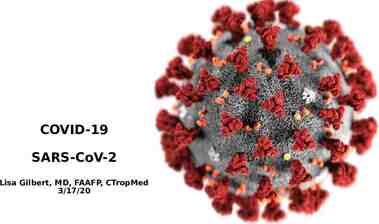EVALUATE A CASUALTY TACTICAL COMBAT CASUALTY CARE TSP 081-T-1001-1
26 Slides422.50 KB
EVALUATE A CASUALTY TACTICAL COMBAT CASUALTY CARE TSP 081-T-1001-1
Perform Care Under Fire Care under fire is rendered at the scene of the injury while you and the casualty are still under effective hostile fire. TSP 081-T-1001-2
Care Under Fire - 1 Return fire. If possible, determine if the casualty is alive or dead. Attempts to check for airway and breathing will expose the rescuer to enemy fire. Do not attempt to provide first aid if your own life is in imminent danger. TSP 081-T-1001-3
Care Under Fire - 2 Provide tactical care to the live casualty. Keep the casualty from sustaining additional wounds. Direct the casualty to return fire, move to cover, and perform self-aid (stop bleeding), if possible. If the casualty is unresponsive, move the casualty, his weapon, and mission-essential equipment to cover, situation permitting. TSP 081-T-1001-4
Care Under Fire - 3 Administer life-saving hemorrhage control. Determine relative threat of the situation versus the risk of the casualty's bleeding to death. If the casualty has severe bleeding from a limb or has suffered amputation of a limb, apply a tourniquet before moving the casualty. Transport the casualty, weapon, and missionessential equipment to cover, if possible. TSP 081-T-1001-5
Perform Tactical Field Care Tactical field care is rendered by the individual when no longer under hostile fire. Tactical field care also applies to situations in which an injury has occurred during the mission but there has been no hostile fire. TSP 081-T-1001-6
Sequence of Steps Check for-1. 2. 3. 4. 5. 6. 7. Responsiveness Airway Breathing Bleeding Shock Fractures Burns TSP 081-T-1001-7
Check for Responsiveness “Are you Okay?” Gently shake or tap casualty on the shoulder. Determine level of consciousness - AVPU. A Alert V Responds to verbal commands P Responds to pain U Unresponsive TSP 081-T-1001-8
Conscious Casualty Ask where his body feels different than usual, or where it hurts. Continue evaluation by checking for bleeding. If the casualty is conscious but is choking and cannot talk, stop the evaluation and begin treatment to clear the airway. TSP 081-T-1001-9
Unconscious Casualty Position the casualty and open the airway. Assess for breathing and chest injuries. Look, listen, and feel for respiration. Insert a nasopharyngeal airway, if applicable. Check for open chest wound. Apply dressing and perform needle chest decompression, if needed. TSP 081-T-1001-10
Check for Bleeding Look for spurts of blood or blood-soaked clothes. Look for entry and exit wounds. Check back of casualty’s body and head. If bleeding is present, stop evaluation and dress all wounds. Treat for shock. TSP 081-T-1001-11
Check for Fractures OPEN FRACTURE CLOSED FRACTURE TSP 081-T-1001-12
Check for Burns Often cause extreme pain, scarring, or death. Checking for burns involves: Checking for singed clothes. Looking carefully for reddened, blistered, or charred skin. TSP 081-T-1001-13
Administer Medications Administer pain medications and antibiotics (the casualty's combat pill pack) to any Soldier wounded in combat. Each Soldier will be issued a combat pill pack prior to deployment on tactical missions. TSP 081-T-1001-14
Transport Casualty Transport the casualty to the site where evacuation is anticipated, if necessary. Seek medical aid. TSP 081-T-1001-15
Casualty Evacuation (CASEVAC) When nonmedical vehicles are used to transport a casualty, it is called CASEVAC. A Soldier accompanying an unconscious casualty should monitor the casualty's airway, breathing, and bleeding. TSP 081-T-1001-16
Field Medical Card TSP 081-T-1001-17
FMC – Block 1 TSP 081-T-1001-18
FMC – Block 3 TSP 081-T-1001-19
FMC – Block 4 TSP 081-T-1001-20
FMC – Block 9 TSP 081-T-1001-21
FMC - Abbreviations Abraded wound--Abr W Contused wound--Cont W Fracture (compound) open--FC Fracture (compound) open comminuted--FCC Fracture simple (closed)--FS Lacerated wound--LW Multiple wounds--MW Penetrating wound--Pen W Perforating wound--Perf W Severe--SV Slight--SL TSP 081-T-1001-22
FMC – Block 11 TSP 081-T-1001-23
FMC – Blocks 6 and 8 TSP 081-T-1001-24
FMC – Block 2 TSP 081-T-1001-25
Attach FMC TSP 081-T-1001-26































